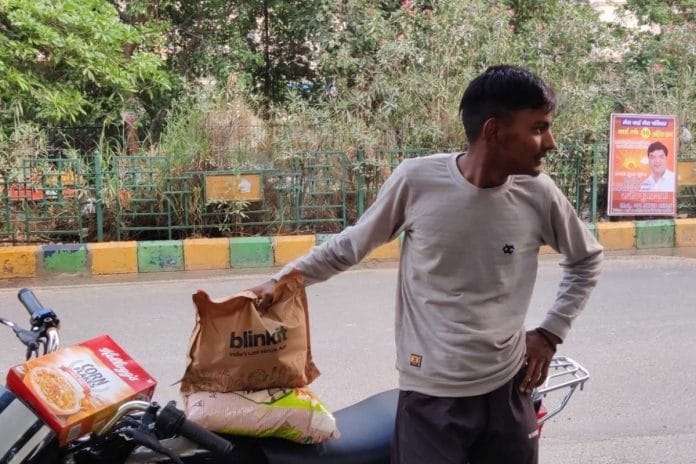Three years ago, when I was trying to build a company (a sort of euphemism for not having steady income), some well-meaning folks sought my advice on the strategic direction for a fledgling startup.
This startup, they said, wanted to make a media splash about delivering groceries and other stuff in 10 minutes. Was a 10-minute delivery of much use to anyone? Can besan, banana, or bread be really the thing you would need or want in an emergency?
Since this was an informal chat and I had no skin in the game, I decided to have a bit of fun. Think about it like having a talking puppy, I said. Would it be of much practical use? But boy, won’t it be great to have one! It will become a huge talking point and probably make me rich.
This was not an original thought, “inspired” as it was by Chandler Bing in Season 6 Episode 14 of Friends, the one in which Joey tries to make Chandler cry by imagining a three-legged puppy begging for help.
The 10-minute idea appeared to be original, but not hugely impressive. As Scene Unseen has written before, startup founders should focus on solving critical problems.
As it turns out, the views of a newspaper columnist are not very consequential. It seems to be a good thing that quick commerce is not trying to solve a big problem.
The new consumer
Rahul Taneja, partner, Lightspeed, sees this as “building on top of an existing user behaviour of ordering from the corner shop or kirana store, and combining that with changing user habits”. What was done earlier on a phone call is now being done on an app, but more efficiently.
“In a way, this is not about behaviour change as much as behaviour adaptation,” Mr Taneja told your columnist.
Lightspeed was one of the prominent names in the latest funding round for Zepto on June 21, which gave the quick commerce startup a post-money valuation of $3.6 billion.
Two other flag bearers of quick commerce are not doing too badly, either. Blinkit was struggling when Zomato acquired it in 2022. In May this year, Deepinder Goyal, Zomato’s founder and CEO, said in a letter to shareholders: “We are just grateful that the bet that we took on Blinkit worked out just fine.” He was downplaying it: Blinkit turned operationally profitable in March. Its gross order value — a measure of the money earned on each trip — doubled in the fourth quarter of 2023-24 and all forecasts point to a bright future.
Swiggy, as it gets ready to float an initial public offering, is hiring from companies such as Amazon and Reliance to bolster the leadership team at Instamart, its quick commerce wing.
Indeed, quick commerce in India is scripting an unlikely success story. Nearly every quick commerce startup outside India has shut down, changed its strategy, suffered a massive erosion in valuation, or scaled down drastically.
So, why is it working in India? It is working because it is responding to the needs and wants of the new consumer, who is not in the habit of weekly or monthly shopping. They order on impulse and want it delivered quickly, even if it means placing several orders in the course of a day — or night. They are not interested in a trek to the convenience store, rummaging through shelves, and enduring the checkout queues.
According to a Bernstein survey, as reported by Techcrunch, adoption of quick commerce is the highest among those aged between 18 and 35. Those who are 36 and above are also adopting digital channels, with more than 30 per cent preferring quick commerce.
Also read: Instant grocery delivery start-up Zepto doubles value to Rs 4,300 crore
Dark store shining
Sure, India has a large young population, but it is not the only country where young people live. And it does not take a very large number of consumers for a quick commerce platform to be successful.
In a YouTube chat with the Zepto founders in September last year, Nikhil Kamath of Zerodha asked them what percentage of the population was using apps such as Zepto to shop. Aadit Palicha, co-founder and CEO of Zepto, said it was, collectively, 0.3 per cent, and that quick commerce needed only 0.35 per cent to make money.
The key is dark stores, which are like a micro warehouse where, instead of customers moving through the aisles, there are packers. For success, a company must keep the throughput — product or service produced or delivered within a specified period — high. That will keep the rentals, as a percentage of sales, low. It works in India because in the top cities the density of consumers is crazy high. A high-rise complex in Gurugram can have as many potential consumers as an entire town in a large but thinly populated country. And India has cheap labour. A short delivery dash can be done for a few rupees, compared to a few dollars in the United States.
“What makes quick commerce economically viable in India is the unique combination of demand density, which means delivery distances are much shorter, and lower cost of labour — reflected in rider cost, or delivery cost per order,” says Mr Taneja.
Rajesh Sawhney, a well-regarded founder and investor, said on X on Tuesday that the best way to learn quick commerce was to work as a delivery executive for Zepto, Blinkit, Instamart. One of his portfolio founders did this and found deep insights in operations and consumer behaviour.
That resonates. The Scene Unseen brood lives on the 17th floor and it takes nearly five minutes just to reach the apartment block’s entry gate. Yet a few times every day, a quick commerce chap dings the doorbell within minutes of placing the order.
It is nothing short of magical. Like a talking puppy.
This article was previously published in ‘Business Standard’. It has been reproduced here with permission.






